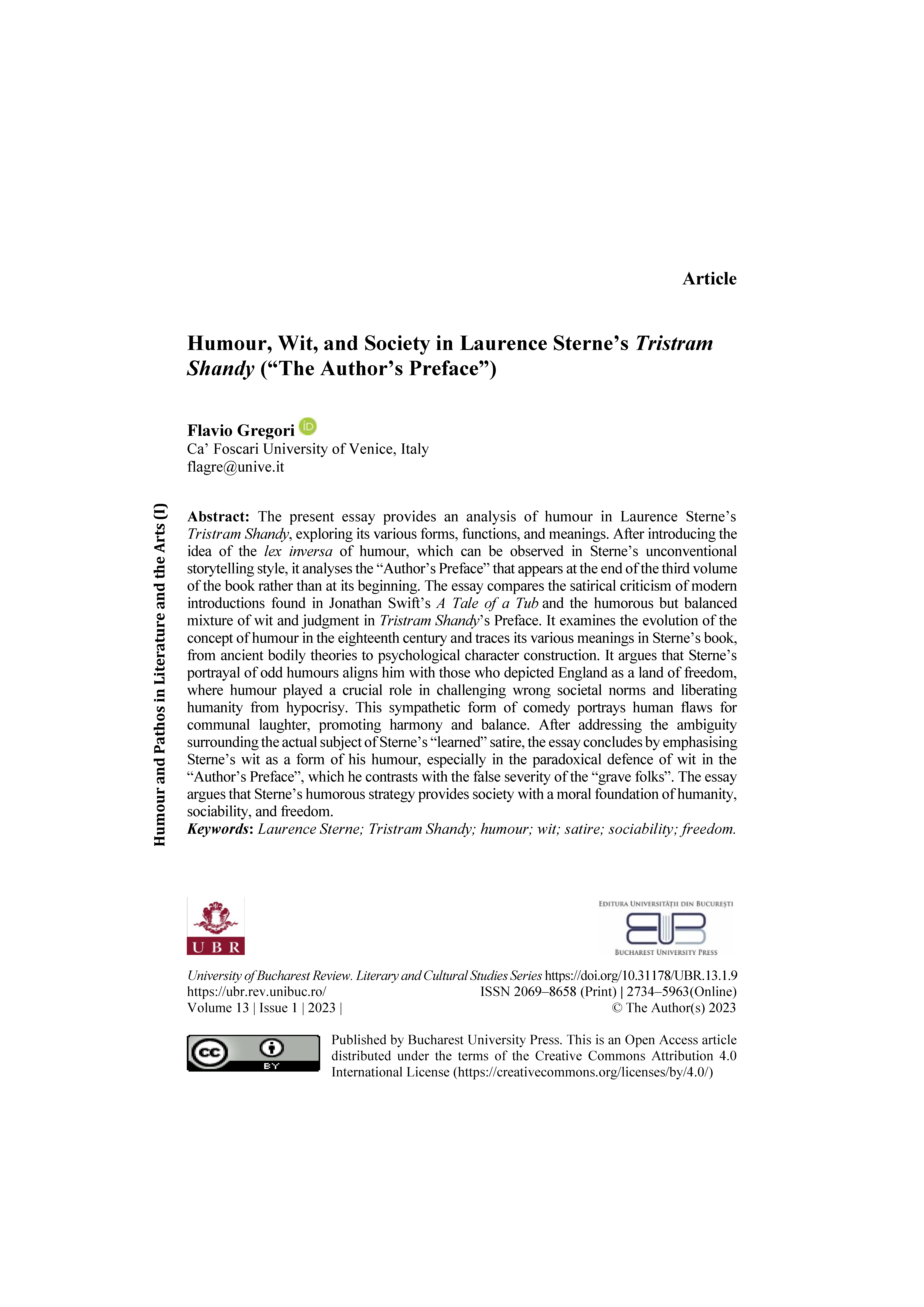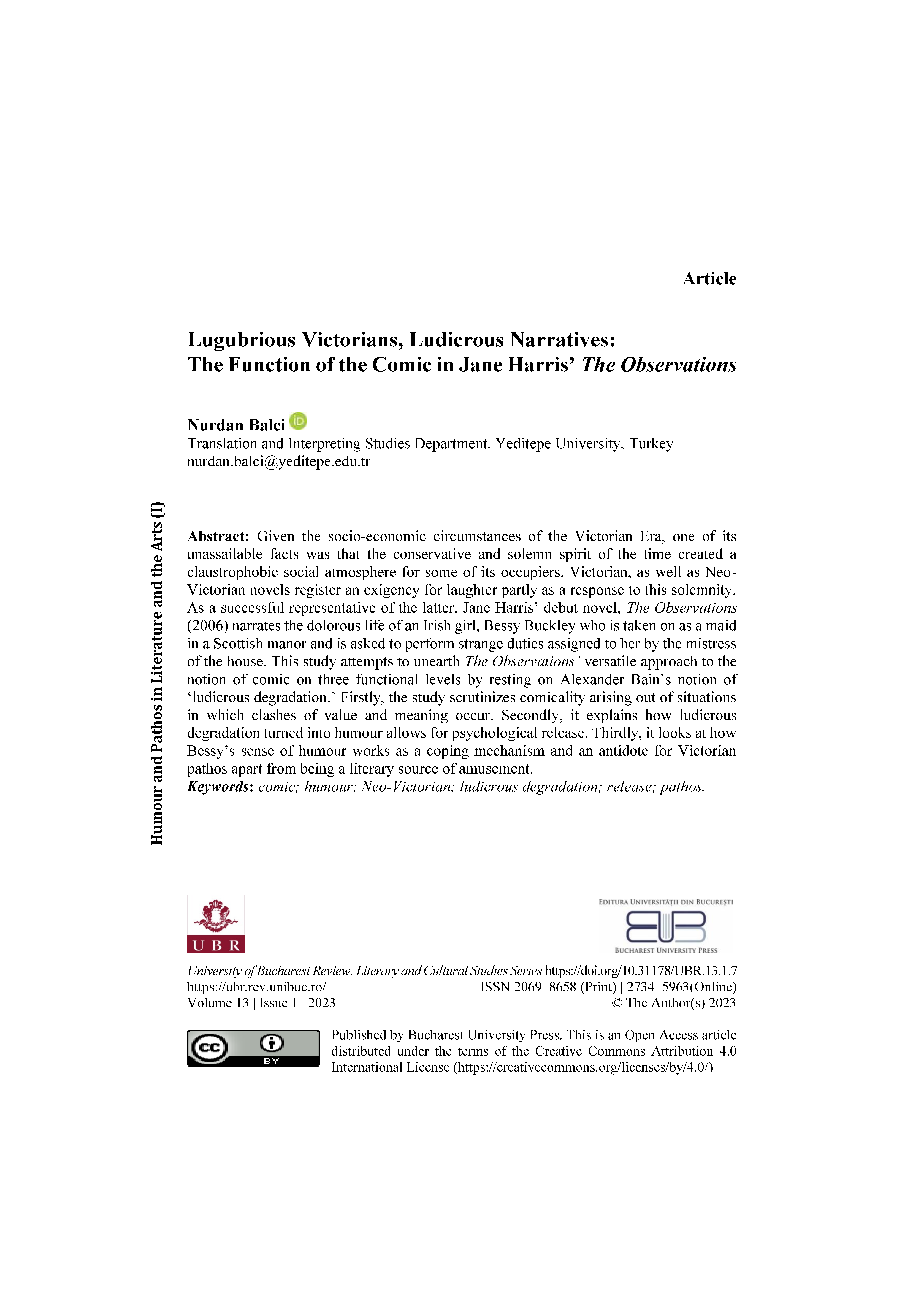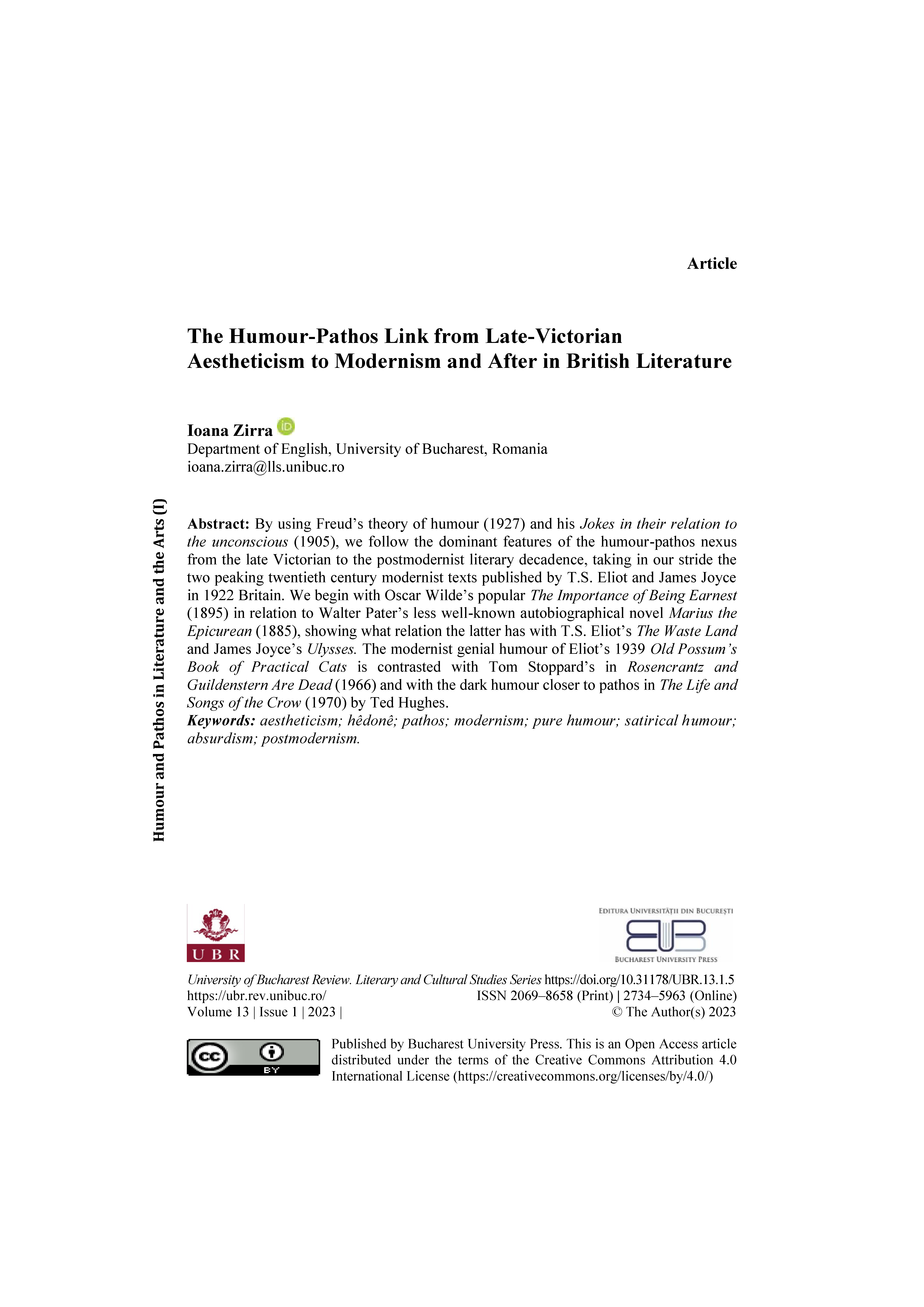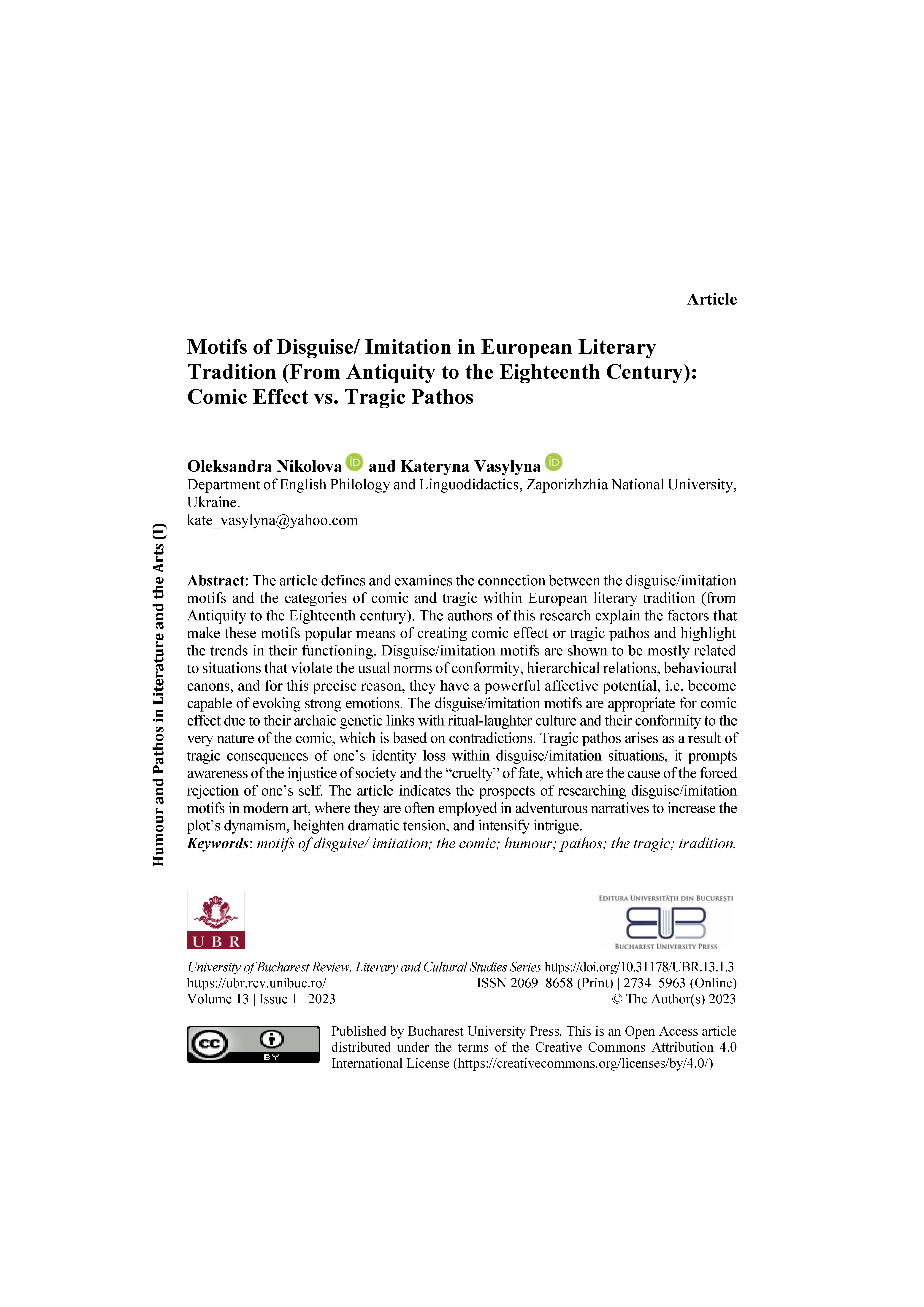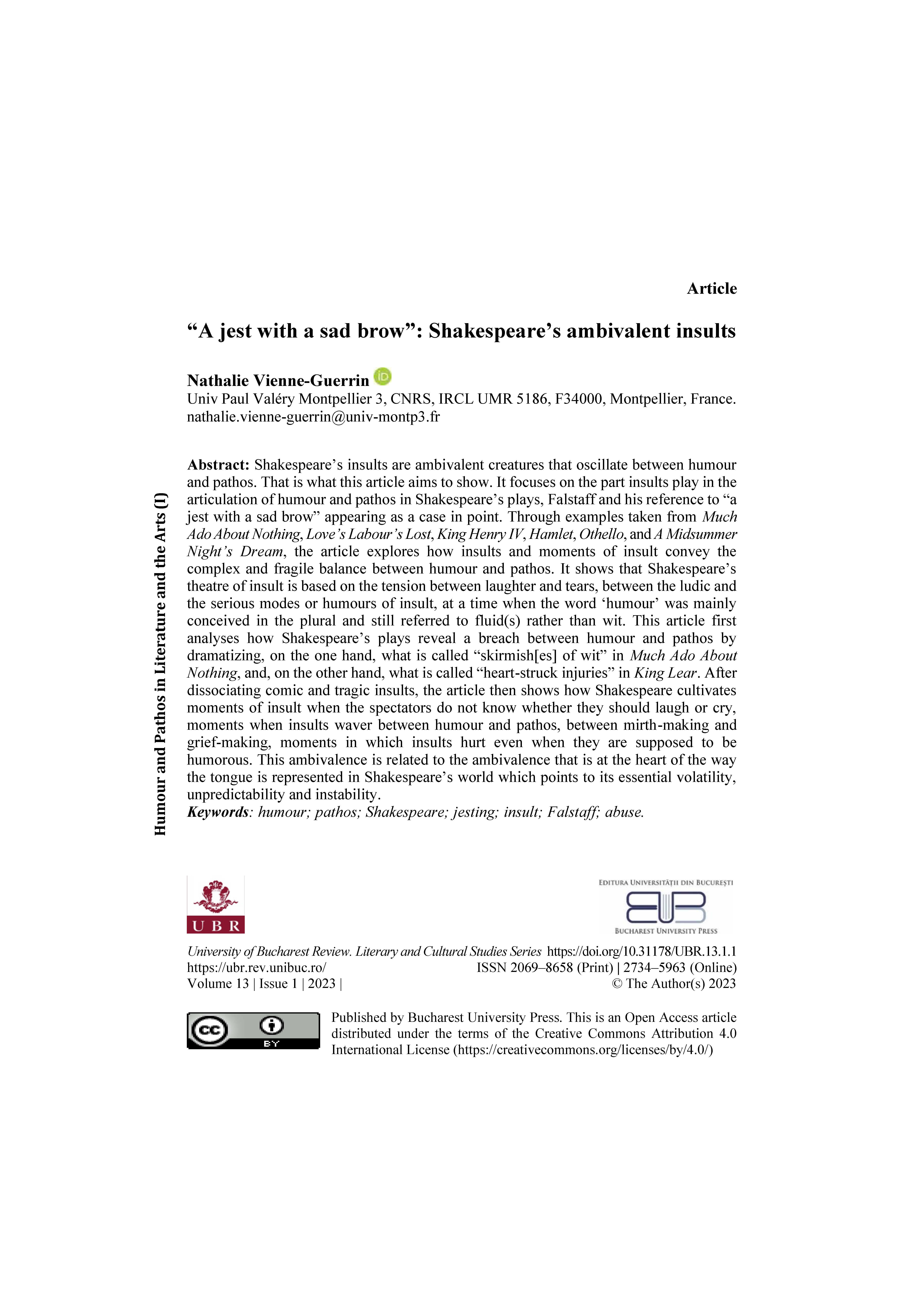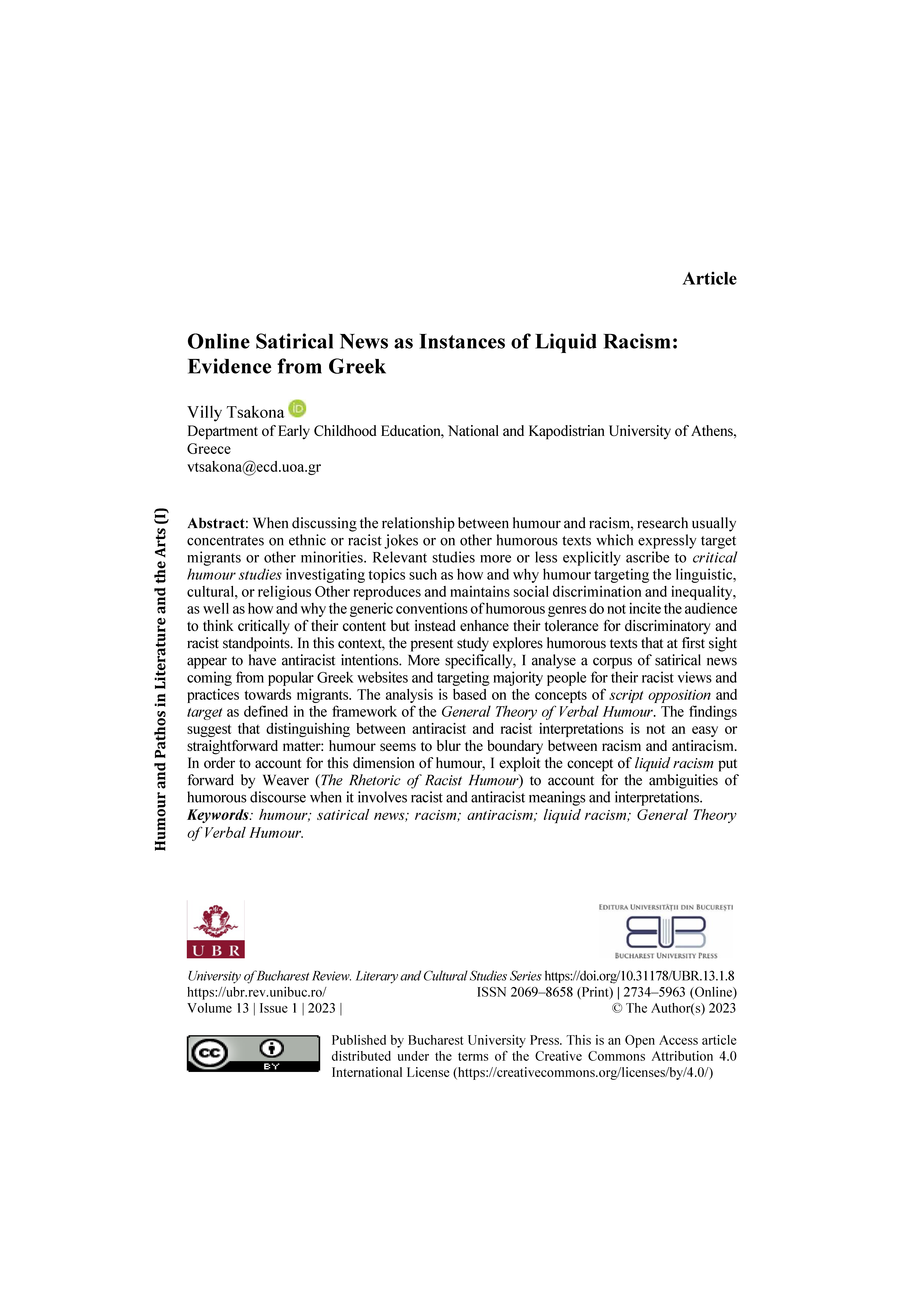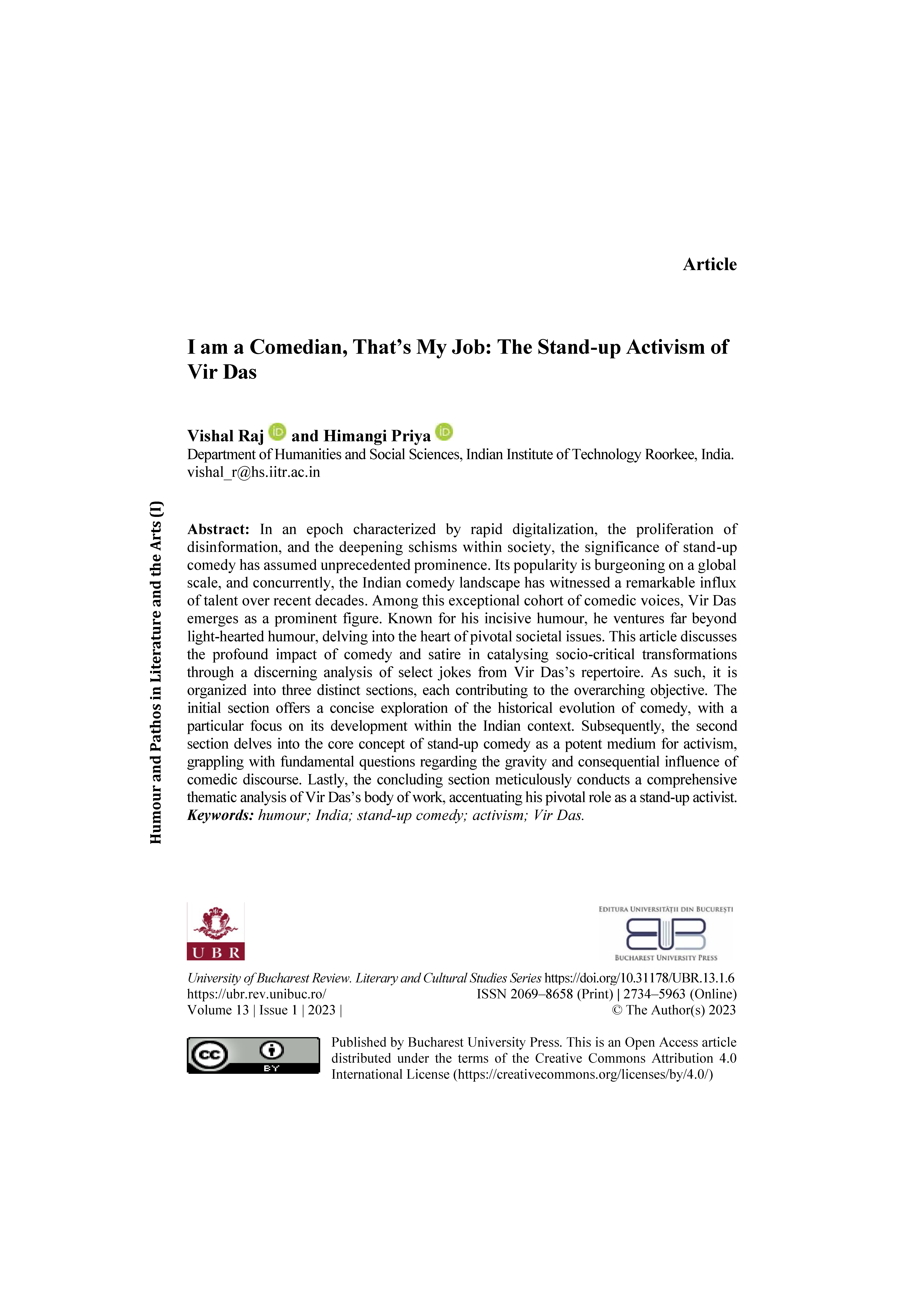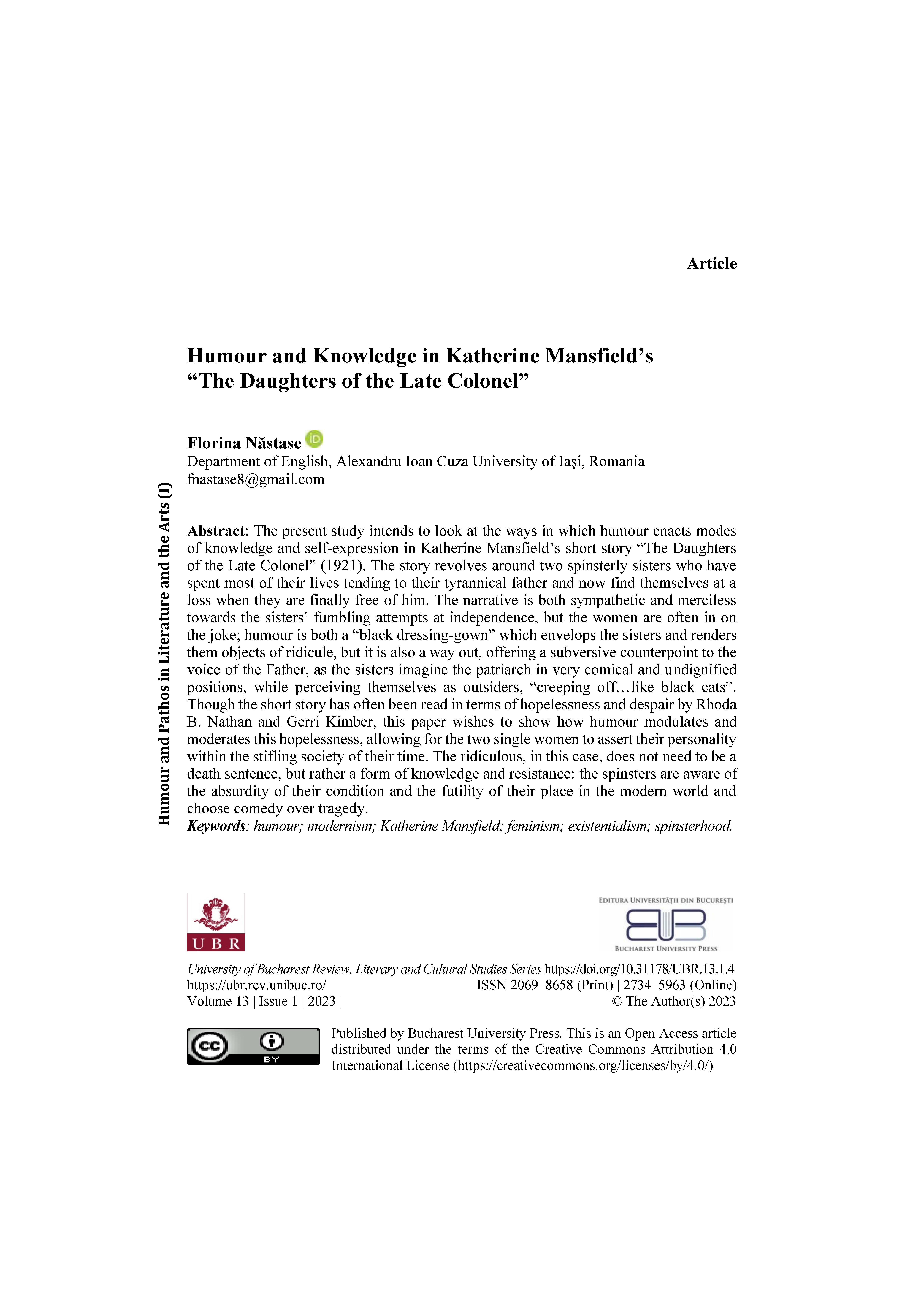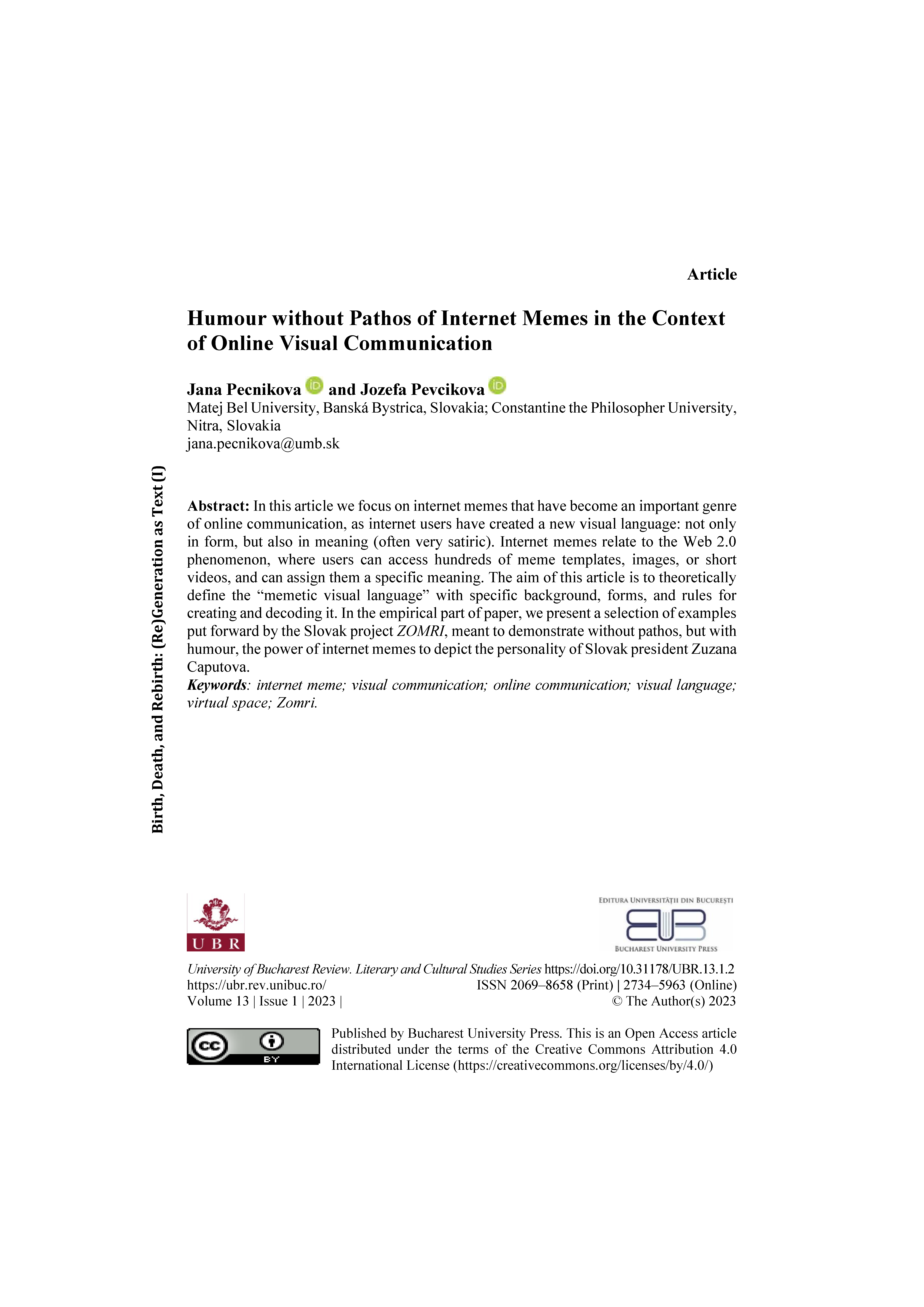Vol. 13 No. 1 (2023): HUMOUR AND PATHOS IN LITERATURE AND THE ARTS (I)
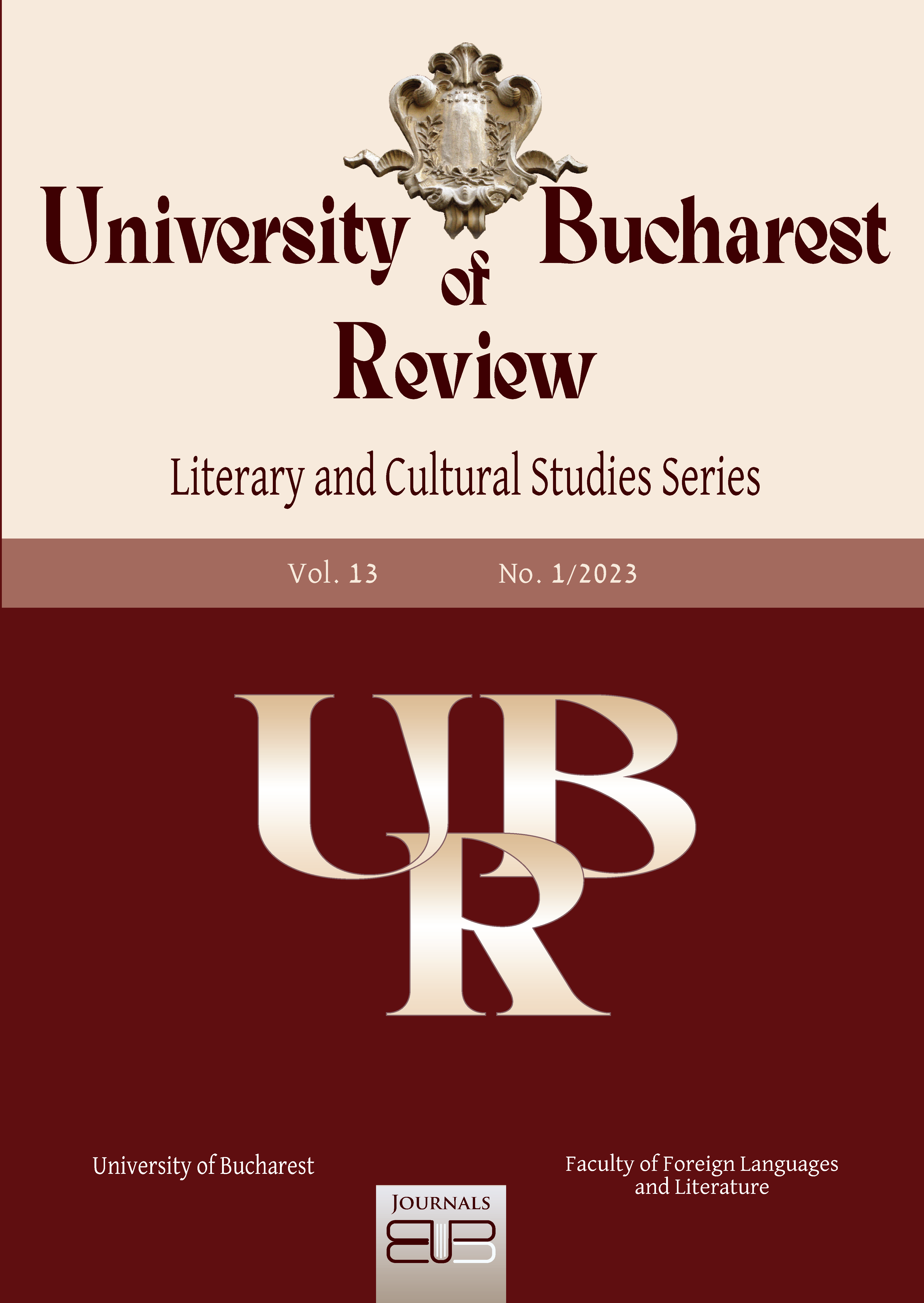
he journal’s originality lies primarily in the following cherished values: 1. inclusiveness: open to both literature-centered, and culture-centered scholarship, both theory, and practice/ applied analysis, and coverage of the entire English-speaking space; 2. pluralism: no theoretical or ideological partisanship, pooling scholars from all areas of the world, all national and academic cultures; open-minded engaging of contentious subjects; 3. extended cultural discourse studies: screening the entire field of applicability for the notion of discourse and discourse studies as a suprasegmental concept, meant to bring together under the same umbrella critical theories, literary criticism, social anthropology, British, American and Canadian cultural studies, translation theories, comparative literature, as well as the study of nationalism and post-communism, visual culture and performance arts.

